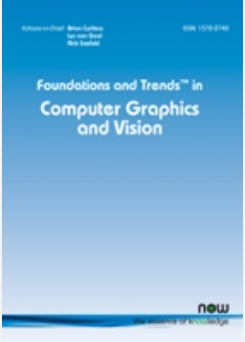Decision Forests: A Unified Framework for Classification, Regression, Density Estimation, Manifold Learning and Semi-Supervised Learning
IF 9.3
Q2 COMPUTER SCIENCE, INTERDISCIPLINARY APPLICATIONS
引用次数: 891
Abstract
This review presents a unified, efficient model of random decision forests which can be applied to a number of machine learning, computer vision, and medical image analysis tasks. Our model extends existing forest-based techniques as it unifies classification, regression, density estimation, manifold learning, semi-supervised learning, and active learning under the same decision forest framework. This gives us the opportunity to write and optimize the core implementation only once, with application to many diverse tasks. The proposed model may be used both in a discriminative or generative way and may be applied to discrete or continuous, labeled or unlabeled data. The main contributions of this review are: (1) Proposing a unified, probabilistic and efficient model for a variety of learning tasks; (2) Demonstrating margin-maximizing properties of classification forests; (3) Discussing probabilistic regression forests in comparison with other nonlinear regression algorithms; (4) Introducing density forests for estimating probability density functions; (5) Proposing an efficient algorithm for sampling from a density forest; (6) Introducing manifold forests for nonlinear dimensionality reduction; (7) Proposing new algorithms for transductive learning and active learning. Finally, we discuss how alternatives such as random ferns and extremely randomized trees stem from our more general forest model. This document is directed at both students who wish to learn the basics of decision forests, as well as researchers interested in the new contributions. It presents both fundamental and novel concepts in a structured way, with many illustrative examples and real-world applications. Thorough comparisons with state-of-the-art algorithms such as support vector machines, boosting and Gaussian processes are presented and relative advantages and disadvantages discussed. The many synthetic examples and existing commercial applications demonstrate the validity of the proposed model and its flexibility.决策森林:分类、回归、密度估计、流形学习和半监督学习的统一框架
这篇综述提出了一个统一的、有效的随机决策森林模型,它可以应用于许多机器学习、计算机视觉和医学图像分析任务。我们的模型扩展了现有的基于森林的技术,因为它在同一决策森林框架下统一了分类、回归、密度估计、流形学习、半监督学习和主动学习。这使我们有机会只编写和优化一次核心实现,并将其应用于许多不同的任务。所提出的模型可以以判别或生成的方式使用,并且可以应用于离散或连续,标记或未标记的数据。本文的主要贡献有:(1)为各种学习任务提出了一个统一的、概率化的、高效的模型;(2)展示了分类森林的边际最大化特性;(3)讨论概率回归森林与其他非线性回归算法的比较;(4)引入密度森林来估计概率密度函数;(5)提出了一种高效的密度森林采样算法;(6)引入流形森林进行非线性降维;(7)提出了传导学习和主动学习的新算法。最后,我们讨论了随机蕨类植物和极端随机树木等替代方案如何从我们更一般的森林模型中产生。本文档面向希望学习决策森林基础知识的学生,以及对新贡献感兴趣的研究人员。它以结构化的方式展示了基本和新颖的概念,并提供了许多说明性示例和实际应用。与最先进的算法,如支持向量机,增强和高斯过程进行了全面的比较,并讨论了相对的优点和缺点。许多综合算例和现有的商业应用证明了该模型的有效性和灵活性。
本文章由计算机程序翻译,如有差异,请以英文原文为准。
求助全文
约1分钟内获得全文
求助全文
来源期刊

Foundations and Trends in Computer Graphics and Vision
COMPUTER SCIENCE, INTERDISCIPLINARY APPLICATIONS-
CiteScore
31.20
自引率
0.00%
发文量
1
期刊介绍:
The growth in all aspects of research in the last decade has led to a multitude of new publications and an exponential increase in published research. Finding a way through the excellent existing literature and keeping up to date has become a major time-consuming problem. Electronic publishing has given researchers instant access to more articles than ever before. But which articles are the essential ones that should be read to understand and keep abreast with developments of any topic? To address this problem Foundations and Trends® in Computer Graphics and Vision publishes high-quality survey and tutorial monographs of the field.
Each issue of Foundations and Trends® in Computer Graphics and Vision comprises a 50-100 page monograph written by research leaders in the field. Monographs that give tutorial coverage of subjects, research retrospectives as well as survey papers that offer state-of-the-art reviews fall within the scope of the journal.
 求助内容:
求助内容: 应助结果提醒方式:
应助结果提醒方式:


